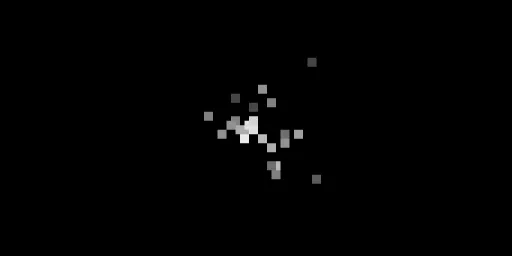
| project name: | euclidigons |
| project url: | https://github.com/synthetiv/euclidigons |
| authors: | synthetivv setfield |
| description: | geometric rhythm generator |
| discussion url: | https://llllllll.co/t/eculidigons/36666 |
| tags: | sequencer synth |
euclidigons
Sequencer for monome norns, imagined by and realized in collaboration with @setfield

installation
- Download the latest version from GitHub
- Unzip into Norns’
/home/we/dust/code/directory - Reset or sleep yr norns (there’s a custom engine)
introduction
At startup, there will be two shapes visible on the screen. Think of the polygons’ sides as strings: when a side is crossed by one of the other shapes’ vertices, the string is plucked or struck.* The faster the side-string and vertex-plectrum are traveling relative to one another, the louder and brighter the note will be; and different harmonics will be emphasized depending on where along its length the string is struck.
E1 chooses a shape to edit.
E2 moves it along the X axis.
E3 changes its size.
K1+E2 sets the note to which its sides are tuned.
K1+E3 transposes the note in octaves.
K2+E2 sets rotation rate.
K2+E3 sets the number of sides (1-9).
K3 mutes or unmutes the selected shape.†
K1+K2 deletes the selected shape.
K1+K3 inserts a new shape.
Arc encoders are also supported and edit the currently active shape:
ARC 1 sets the note.
ARC 2 transposes the note in octaves.
ARC 3 sets the rotation rate.
ARC 4 sets the number of sides (1-9).
* by default, notes are only sounded when one shape’s vertex crosses into another shape, but this can be changed using the ‘trigger style’ param.
† set the ‘mute style’ param to ‘own note only’ to allow a muted shape’s vertices to pluck the strings of another shape.
about the engine
PrimitiveString “models” a plucked string in the style of Kazimir Malevich. A blend of two basic tone generators – a “nulse” pulse wave with added AM’d white noise, and a “caw” comb-filtered sawtooth wave – is fed through a low pass filter and multiplier. Overall amplitude, LPF cutoff, noise amount, and comb filter feedback are all controlled by a single attack-release envelope.
Settings exposed in Norns params:
amp: this one is simple: volume
waveform (pulse/saw): blend between the two waveforms/generators described above; 0.0 = pure pulse, 1.0 = pure saw
pulse noise: the amount of noise present in the pulse waveform
saw comb: the decay (in seconds) of the comb filter fed by the saw waveform
brightness: sets maximum filter cutoff
attack: AR envelope attack time in seconds
release: AR envelope release time in seconds